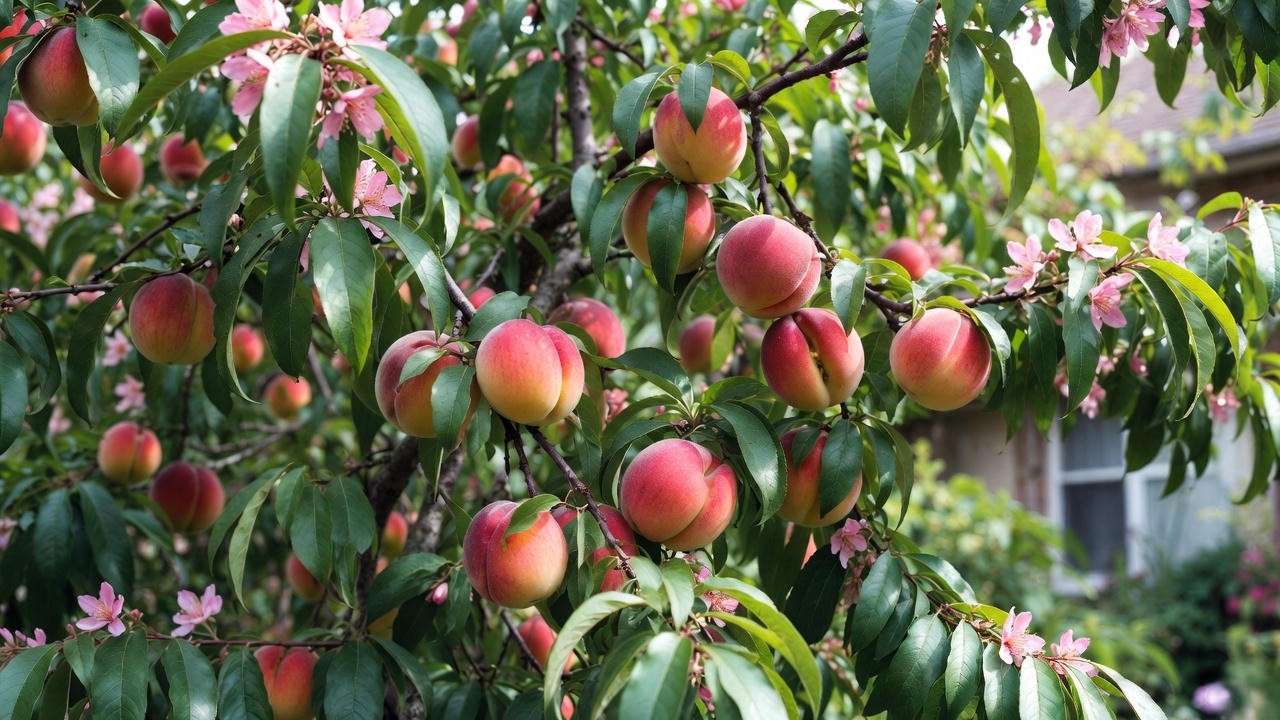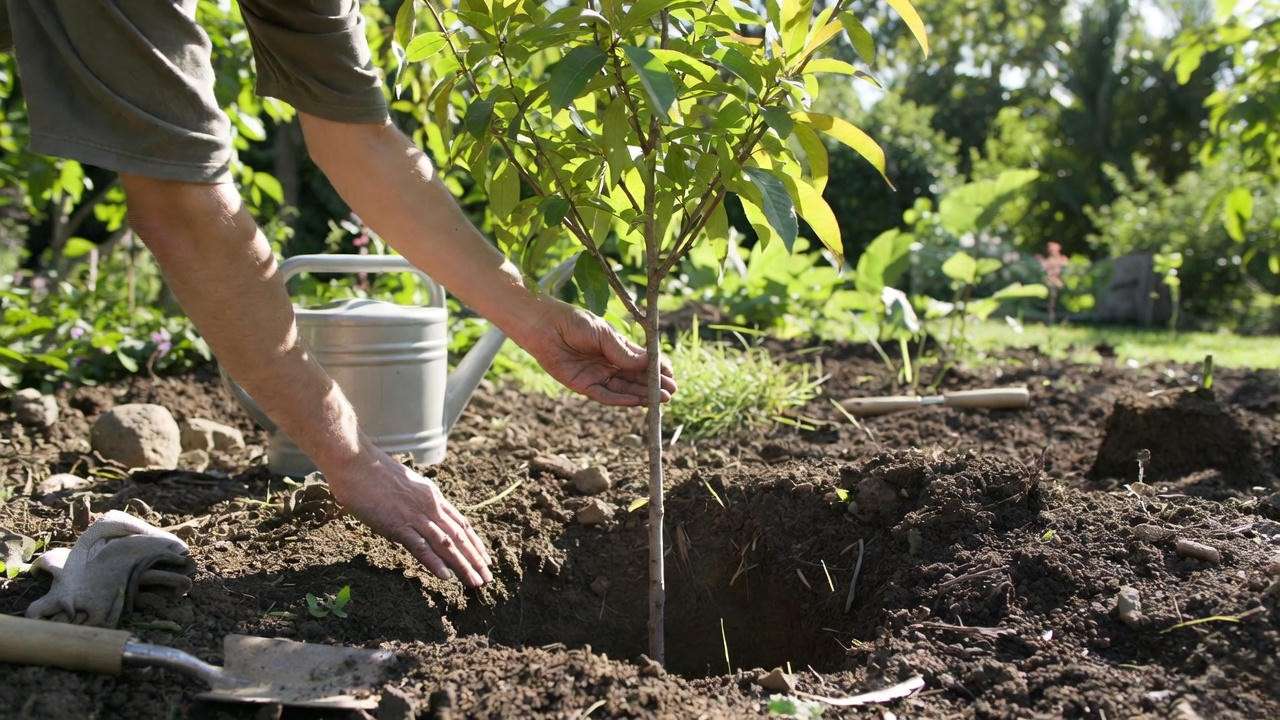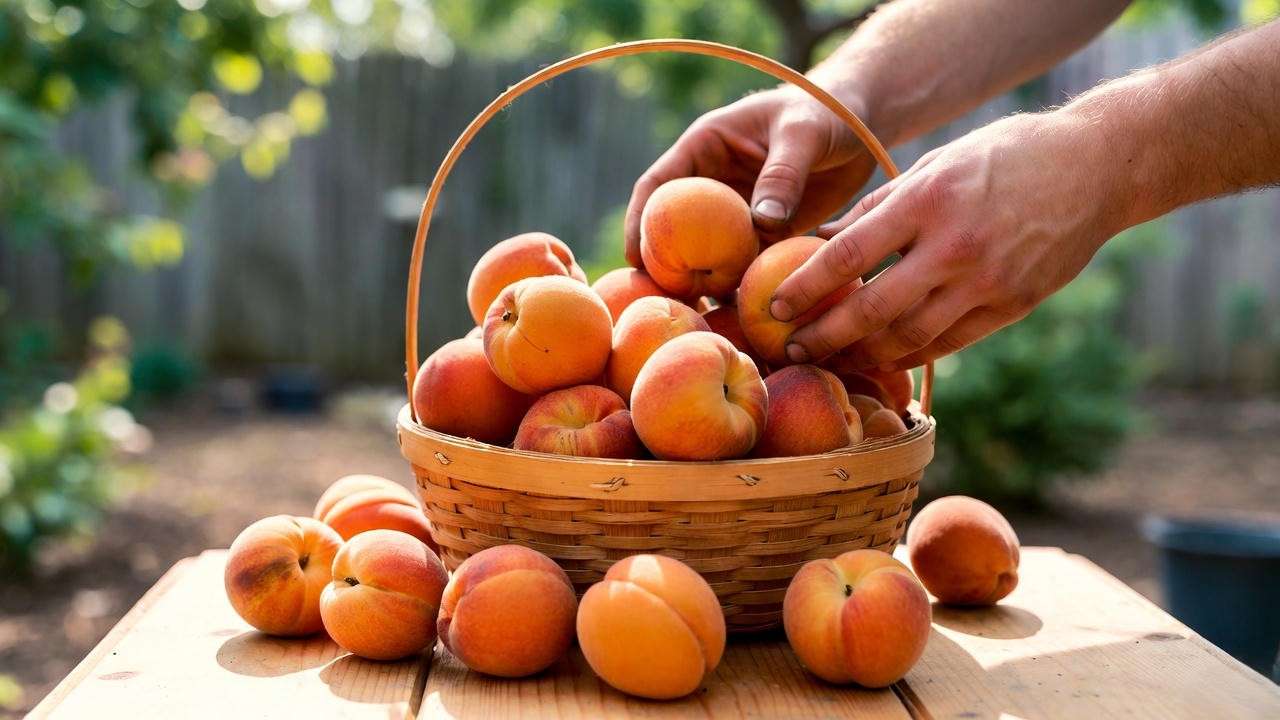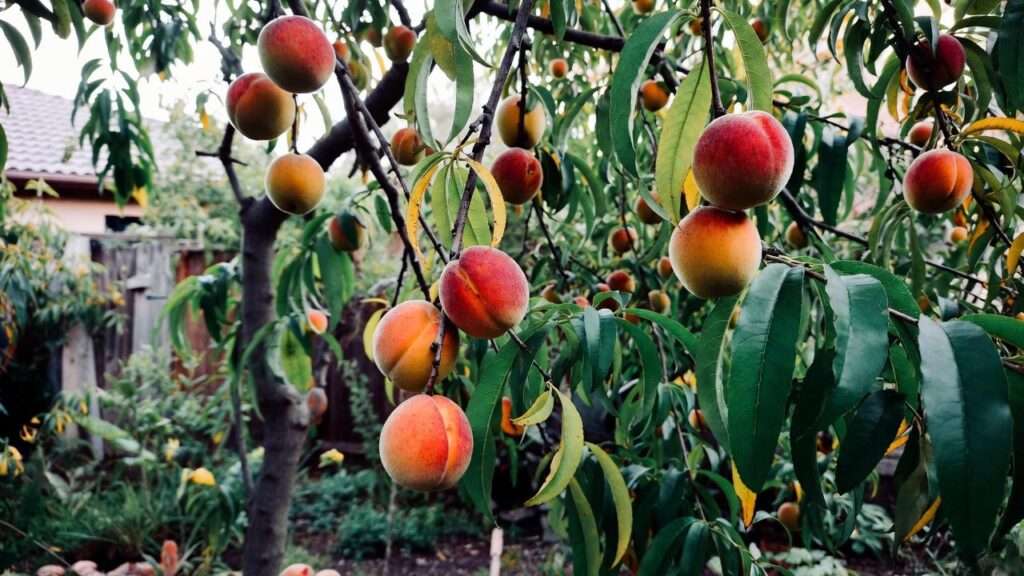Picture this: you’re standing in your backyard, plucking a sun-warmed, juicy Redhaven peach straight from your own peach tree Redhaven. The sweet aroma fills the air, and with one bite, you’re met with a burst of flavor that store-bought fruit just can’t match. 🌞 Growing a Redhaven peach tree at home is not only rewarding but also surprisingly achievable with the right care. Whether you’re a novice gardener or a seasoned grower, this guide shares seven expert-backed tips to help your Redhaven thrive, producing abundant, delicious peaches. Backed by years of horticultural experience and trusted sources like university extension programs, this comprehensive article will empower you to cultivate a healthy, fruitful tree. 🌿 Let’s dive into the world of Redhaven peaches and transform your garden into a peach paradise!
Why Choose the Peach Tree Redhaven? 🍑
The Redhaven peach tree is a favorite among home gardeners and orchardists alike, and for good reason. Its reliability, delectable fruit, and adaptability make it a standout choice for backyard orchards. Let’s explore why this cultivar deserves a spot in your garden.
History and Characteristics of Redhaven Peaches 📜
Developed in 1940 at Michigan State University, the Redhaven peach tree has become a gold standard in peach cultivation. This cultivar is celebrated for its medium-sized, freestone peaches with vibrant red skin and sweet, juicy yellow flesh. Ripening in mid-summer (typically July to August in most regions), Redhaven peaches are perfect for eating fresh, canning, or baking into pies and cobblers. 🥧 Their cold hardiness (suitable for USDA zones 5-8) and resistance to diseases like bacterial leaf spot make them a low-maintenance yet high-reward option. The tree’s compact size, typically reaching 12-15 feet tall, ensures it fits well in smaller yards or even large containers with careful management.

Why Redhaven is Perfect for Home Gardens 🌳
The Redhaven’s compact growth habit makes it ideal for home gardens, even in suburban settings. It produces high yields when properly cared for, often yielding dozens of peaches per season. Its spring blossoms, with delicate pink petals, add ornamental beauty, while the colorful fruit enhances your garden’s aesthetic. 🌸 According to Dr. John Clark, a renowned pomologist at the University of Arkansas, “Redhaven’s balance of flavor, productivity, and disease resistance makes it a top pick for home growers.” Whether you’re dreaming of fresh peach salsa or homemade preserves, this tree delivers both practicality and charm.
Tip 1: Selecting the Perfect Spot for Your Peach Tree Redhaven 🌞
Choosing the right location is the foundation of a healthy Redhaven peach tree. A well-chosen spot ensures robust growth, abundant fruit, and fewer issues down the road.
Ideal Sunlight and Soil Conditions ☀️
Redhaven peach trees thrive in full sun, requiring at least 6-8 hours of direct sunlight daily to maximize fruit production. A south-facing slope or open area is ideal. Soil-wise, aim for well-drained, loamy soil with a pH between 6.0 and 6.5. You can test your soil using a home pH kit or send a sample to your local cooperative extension for analysis. If your soil is too acidic, add lime; if too alkaline, incorporate sulfur. Avoid heavy clay or waterlogged areas, as poor drainage can lead to root rot. 🧪
Space and Air Circulation 🍃
Space your Redhaven peach tree 12-15 feet from other trees or structures to promote airflow and reduce the risk of fungal diseases. Good air circulation is critical, as peaches are susceptible to issues like brown rot. Consider companion planting with pest-repelling plants like marigolds or garlic to naturally deter insects. 🌼 Pro Tip: To confirm your site’s drainage, dig a 12-inch-deep hole, fill it with water, and check how quickly it drains. If it takes longer than 4 hours, amend the soil with compost or choose a different spot.
Tip 2: Planting Your Redhaven Peach Tree Like a Pro 🌱
Proper planting sets the stage for a thriving peach tree. Follow these steps to give your Redhaven the best start possible.
Best Time to Plant 📅
Plant your Redhaven peach tree in early spring or late fall, depending on your climate. In colder regions (zones 5-6), spring planting allows roots to establish before winter. In milder zones (7-8), fall planting works well. Avoid planting during extreme heat or freezing conditions to reduce stress on the tree.
Step-by-Step Planting Guide 🕳️
- Choose a Healthy Tree: Select a 1-2-year-old bare-root or container-grown Redhaven from a reputable nursery. Look for a straight trunk and well-developed roots.
- Prepare the Hole: Dig a hole twice as wide and as deep as the root ball (about 2 feet wide and 1.5 feet deep). Loosen the surrounding soil to encourage root growth.
- Prep the Roots: For bare-root trees, soak roots in water for 6-12 hours before planting. Trim any damaged or excessively long roots. 💧
- Plant at the Right Depth: Position the tree so the graft union (the bulge where the rootstock meets the scion) is 2 inches above the soil line. This prevents rot and ensures stability.
- Backfill and Water: Fill the hole with a mix of native soil and compost, tamping gently to remove air pockets. Create a watering basin around the base and water thoroughly (about 2 gallons for a young tree).
- Stake if Needed: In windy areas, stake the tree for the first year to support growth.

Example: For visual learners, imagine a shallow bowl-shaped basin around the tree’s base to direct water to the roots. Check out planting diagrams from the University of Georgia Extension for additional clarity.
Tip 3: Watering and Mulching for Healthy Growth 💦
Consistent watering and proper mulching are key to a vigorous Redhaven peach tree. These practices support root development and maintain soil health.
Watering Needs 🚿
Young Redhaven trees need 1-2 gallons of water weekly during their first year, especially during dry spells. Mature trees require deeper watering—about 10-15 gallons every 7-10 days—during fruit development and hot weather. Water slowly to allow deep penetration, and avoid overwatering, which can cause root rot. Check soil moisture by digging 2 inches down; if it’s dry, it’s time to water. ⚠️ In rainy climates, reduce watering to prevent waterlogging.
Mulching Best Practices 🌾
Apply a 2-4-inch layer of organic mulch, such as wood chips, straw, or shredded bark, around the tree’s base to retain moisture, regulate soil temperature, and suppress weeds. Keep mulch 6 inches from the trunk to prevent rot and discourage rodents. Refresh the mulch annually in spring. A 2021 study from the University of California Extension found that mulched fruit trees retained 20% more soil moisture than unmulched ones, boosting growth and yield. 🌿 Pro Tip: Use composted mulch to add nutrients to the soil over time.
Tip 4: Pruning Your Peach Tree Redhaven for Maximum Yield ✂️
Pruning is essential for shaping your Redhaven peach tree, boosting fruit production, and preventing disease. Done correctly, it ensures your tree remains healthy and productive.
Why Pruning Matters 🌬️
Peach trees, including Redhaven, fruit on one-year-old wood, so annual pruning encourages new growth for next season’s harvest. Pruning also opens the canopy to sunlight and air, reducing fungal diseases like brown rot. Redhaven trees are typically pruned in an open-center (vase-shaped) system, with 3-4 main branches forming a bowl-like structure for optimal light exposure.
When and How to Prune 📆
- Timing: Prune in late winter or early spring, before buds swell but after the risk of hard frost. This timing promotes healing and vigorous spring growth.
- Tools: Use clean, sharp bypass pruners or loppers to make precise cuts and prevent disease spread. Sterilize tools with rubbing alcohol between cuts. 🛠️
- Technique:
- Remove dead, damaged, or diseased branches.
- Thin crowded areas to improve airflow, focusing on inward-growing or crossing branches.
- Shorten last year’s growth by about one-third to encourage fruiting spurs.
- Maintain the open-center shape with 3-4 scaffold branches angled outward.
- Pro Tip: Download a pruning checklist from your local extension service or watch a pruning tutorial from a trusted source like the University staunch.org for hands-on guidance.

Tip 5: Fertilizing for Lush Growth and Juicy Peaches 🌿
Proper fertilization fuels your Redhaven peach tree’s growth, ensuring vibrant foliage and a bountiful harvest. Understanding its nutrient needs and applying fertilizer strategically will keep your tree thriving.
Understanding Nutrient Needs 🧪
Peach trees require a balanced supply of nitrogen (for leaf and shoot growth), phosphorus (for root and fruit development), and potassium (for overall vigor and disease resistance). A soil test, available through your local cooperative extension or a home testing kit, will reveal any deficiencies. Redhaven trees often need extra nitrogen in their early years to establish a strong framework. Micronutrients like zinc and magnesium are also critical for fruit quality.
Fertilizing Schedule 📅
- Young Trees (1-2 years old): Apply a balanced fertilizer, such as 10-10-10 (nitrogen-phosphorus-potassium), in early spring, about 6-8 weeks after planting. Use 1/4 pound of fertilizer per tree, spread evenly in a ring 12 inches from the trunk. Water thoroughly after application. 💧
- Mature Trees (3+ years): Apply 1-2 pounds of 10-10-10 fertilizer per tree, split into two applications: one in early spring (before bud break) and another in early summer (after fruit set). Avoid fertilizing after mid-summer to prevent late-season growth that’s vulnerable to frost. ❄️
- Organic Options: Compost, well-rotted manure, or fish emulsion can replace synthetic fertilizers for eco-conscious gardeners. Apply 2-3 inches of compost annually around the drip line.
- Example: For a 5-year-old Redhaven, apply 1 pound of fertilizer in March and another in June, ensuring even distribution and deep watering. Expert Insight: The University of Georgia Extension recommends annual soil testing to adjust fertilizer rates, as over-fertilizing can lead to excessive vegetative growth at the expense of fruit.
Tip 6: Pest and Disease Management for Redhaven Peach Trees 🐞
Protecting your Redhaven peach tree from pests and diseases is crucial for a healthy tree and high-quality fruit. Proactive management, including organic and integrated pest management (IPM) strategies, keeps problems at bay.
Common Pests 🕸️
- Peach Tree Borers: These larvae tunnel into the trunk, weakening the tree. Look for sawdust-like frass at the base. Control with neem oil sprays or parasitic nematodes applied in early summer. 🐛
- Aphids: These sap-sucking insects cause curled leaves and stunted growth. Introduce ladybugs or spray with insecticidal soap. 🐞
- Plum Curculio: This weevil creates crescent-shaped scars on fruit. Use sticky traps and remove fallen fruit to disrupt their life cycle.
- Pro Tip: Plant companion plants like garlic or chives near your tree to repel pests naturally. 🌱 The University of California IPM program notes that companion planting can reduce pest populations by up to 30%.

Common Diseases 🦠
- Peach Leaf Curl: Caused by the fungus Taphrina deformans, it leads to puckered, discolored leaves. Apply a copper-based fungicide in late fall or early spring before bud break. 🍂
- Brown Rot: This fungal disease affects fruit, causing rot and mummified peaches. Remove affected fruit, improve air circulation through pruning, and apply sulfur-based fungicides during bloom.
- Bacterial Leaf Spot: Redhaven’s resistance helps, but wet conditions can still cause spots on leaves and fruit. Use copper sprays and avoid overhead watering. 💦
- Expert Insight: The USDA recommends sanitation practices, like clearing fallen leaves and fruit, to reduce disease pressure. Regular monitoring and early intervention are key.
Tip 7: Harvesting and Storing Your Redhaven Peaches 🍑
The reward of your hard work is harvesting those juicy Redhaven peaches! Knowing when and how to pick and store them ensures the best flavor and longevity.
When to Harvest 📅
Redhaven peaches typically ripen in mid-summer, from July to August, depending on your climate. Look for these signs:
- Color: A deep red blush covers most of the fruit, with no green remaining on the skin.
- Texture: Peaches yield slightly to gentle pressure but remain firm.
- Ease of Picking: Ripe peaches twist off easily with minimal effort. Test a few fruits to gauge ripeness, as not all peaches ripen simultaneously. Harvest in the morning when temperatures are cooler to preserve flavor.
Harvesting and Storage Tips 🧊
- Harvesting: Gently twist or cut peaches from the branch to avoid damaging the tree or bruising the fruit. Use pruning shears for stubborn fruits. ✂️ Place peaches in a shallow basket to prevent crushing.
- Storage: Store ripe peaches at room temperature for 1-2 days to enhance sweetness, or refrigerate for up to 2 weeks in a perforated plastic bag to slow ripening. For long-term storage, can or freeze peaches for preserves or smoothies. 🥫
- Pro Tip: Try this simple peach cobbler recipe to showcase your harvest: Mix sliced Redhaven peaches with sugar and cinnamon, top with a buttery biscuit crust, and bake until golden. 🥧 Share your creations with friends to spread the joy of homegrown peaches!

Troubleshooting Common Redhaven Peach Tree Problems ⚠️
Even with the best care, issues can arise. Here’s how to diagnose and fix common problems with your Redhaven peach tree.
- Problem: Poor Fruit SetPossible Causes: Inadequate pollination, late frosts, or insufficient chilling hours (Redhaven needs 800-900 hours below 45°F). Solutions: Plant a second peach tree nearby to boost pollination, cover trees with frost blankets during late spring frosts, or consult your local extension for chill hour data. 🐝
- Problem: Leaf Drop or YellowingPossible Causes: Overwatering, nutrient deficiency, or pest damage. Solutions: Check soil moisture and reduce watering if soggy. Apply a balanced fertilizer if leaves are pale. Inspect for pests like aphids and treat accordingly. 🍂
- Problem: Cracked FruitPossible Causes: Inconsistent watering during fruit development. Solutions: Maintain steady watering, especially during hot spells, and mulch to regulate soil moisture.
- Expert Insight: A case study from the Penn State Extension found that consistent irrigation and soil testing resolved 80% of fruit set issues in backyard orchards.
FAQs About Peach Tree Redhaven Care ❓
Here are answers to common questions to help you succeed with your Redhaven peach tree, capturing long-tail search traffic and addressing reader concerns.
- Q1: How long does it take for a Redhaven peach tree to bear fruit?A: With proper care, Redhaven trees typically produce fruit in 2-4 years. Young trees focus on establishing roots and branches, so patience is key. 🌳
- Q2: Can Redhaven peach trees grow in containers?A: Yes, but it’s challenging. Use a large (20-gallon) pot with excellent drainage, choose a dwarf Redhaven variety, and provide extra care with watering and fertilizing. 🪴
- Q3: How do I protect my tree from winter frost?A: Apply a thick layer of mulch around the base, wrap the trunk with burlap, and avoid pruning in fall to prevent tender growth. ❄️
- Q4: Are Redhaven peaches self-pollinating?A: Yes, Redhaven is self-pollinating, but planting a second peach variety (e.g., Elberta) nearby can increase yield through cross-pollination. 🐝
Conclusion: Grow Your Own Redhaven Peaches with Confidence! 🌟
Growing a Redhaven peach tree is a delightful journey that rewards you with juicy, homegrown peaches and a beautiful addition to your garden. By following these seven essential tips—choosing the right spot, planting correctly, watering and mulching, pruning strategically, fertilizing wisely, managing pests and diseases, and harvesting at the perfect time—you’ll set your tree up for success. 🍑 Backed by horticultural expertise and trusted resources like the USDA and university extensions, this guide equips you with the knowledge to cultivate a thriving Redhaven peach tree. Start today, and soon you’ll be savoring the fruits of your labor! Share your peach tree success stories or questions in the comments below—we’d love to hear from you! 💬













